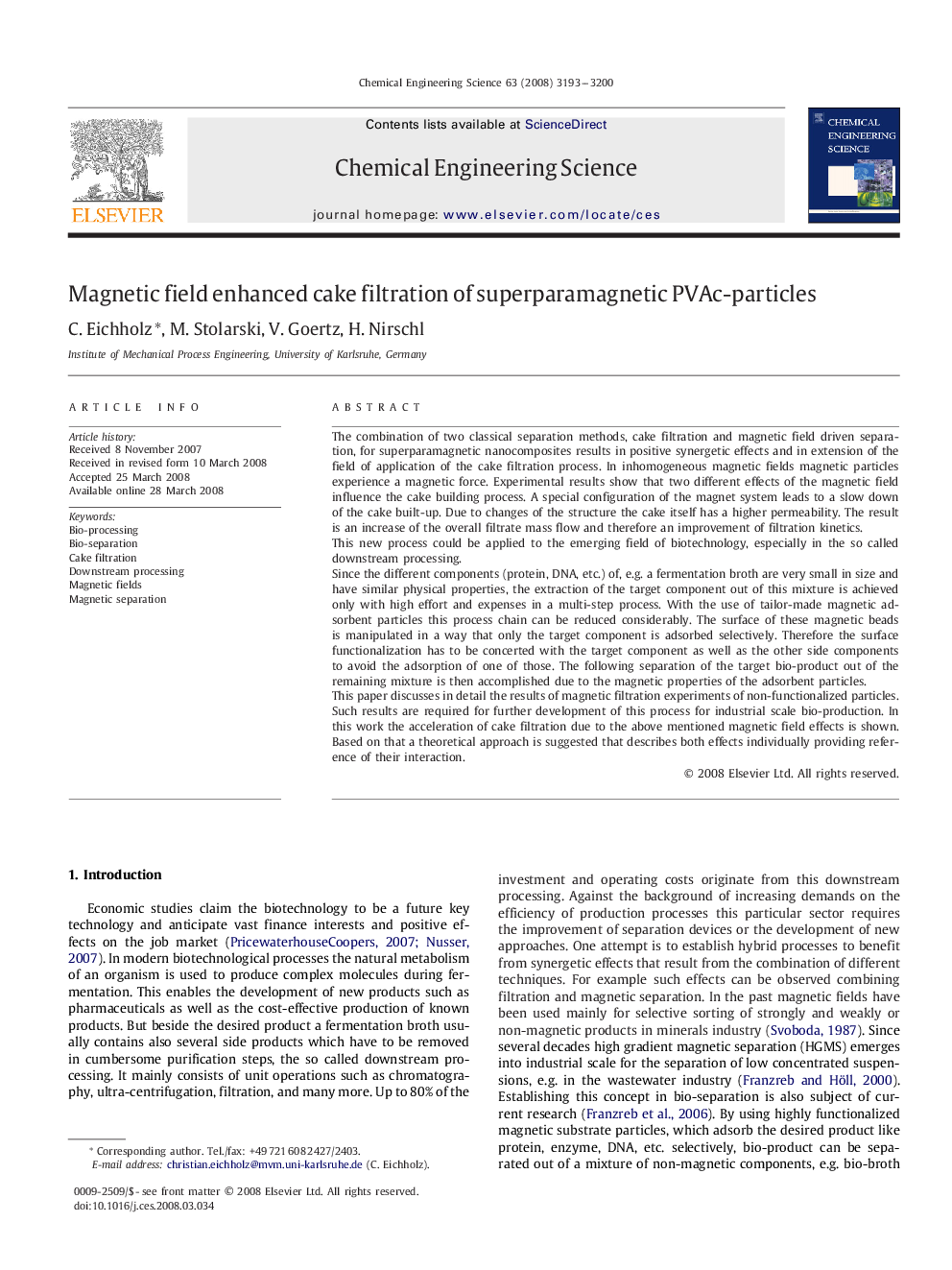| Article ID | Journal | Published Year | Pages | File Type |
|---|---|---|---|---|
| 158690 | Chemical Engineering Science | 2008 | 8 Pages |
The combination of two classical separation methods, cake filtration and magnetic field driven separation, for superparamagnetic nanocomposites results in positive synergetic effects and in extension of the field of application of the cake filtration process. In inhomogeneous magnetic fields magnetic particles experience a magnetic force. Experimental results show that two different effects of the magnetic field influence the cake building process. A special configuration of the magnet system leads to a slow down of the cake built-up. Due to changes of the structure the cake itself has a higher permeability. The result is an increase of the overall filtrate mass flow and therefore an improvement of filtration kinetics.This new process could be applied to the emerging field of biotechnology, especially in the so called downstream processing.Since the different components (protein, DNA, etc.) of, e.g. a fermentation broth are very small in size and have similar physical properties, the extraction of the target component out of this mixture is achieved only with high effort and expenses in a multi-step process. With the use of tailor-made magnetic adsorbent particles this process chain can be reduced considerably. The surface of these magnetic beads is manipulated in a way that only the target component is adsorbed selectively. Therefore the surface functionalization has to be concerted with the target component as well as the other side components to avoid the adsorption of one of those. The following separation of the target bio-product out of the remaining mixture is then accomplished due to the magnetic properties of the adsorbent particles.This paper discusses in detail the results of magnetic filtration experiments of non-functionalized particles. Such results are required for further development of this process for industrial scale bio-production. In this work the acceleration of cake filtration due to the above mentioned magnetic field effects is shown. Based on that a theoretical approach is suggested that describes both effects individually providing reference of their interaction.
